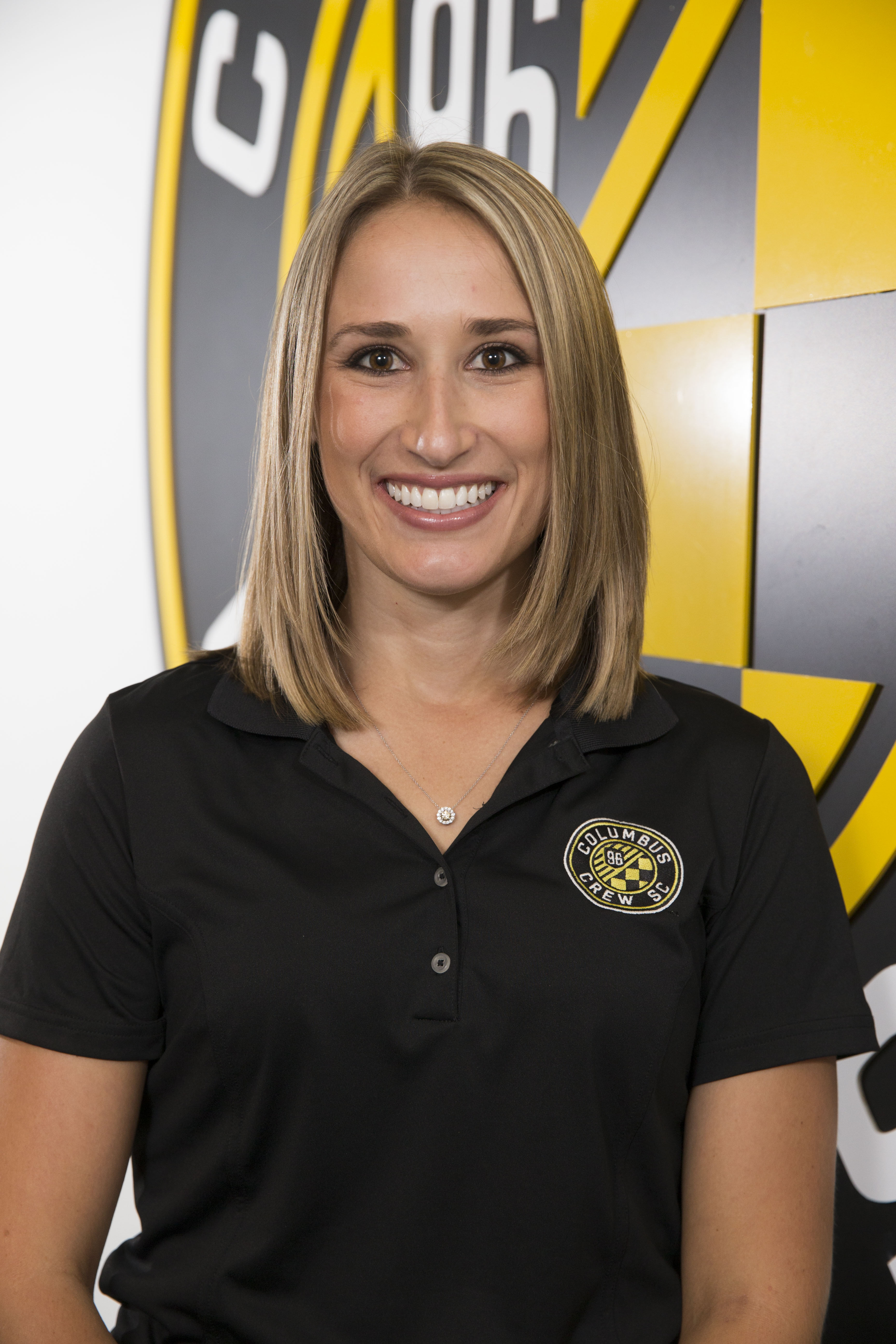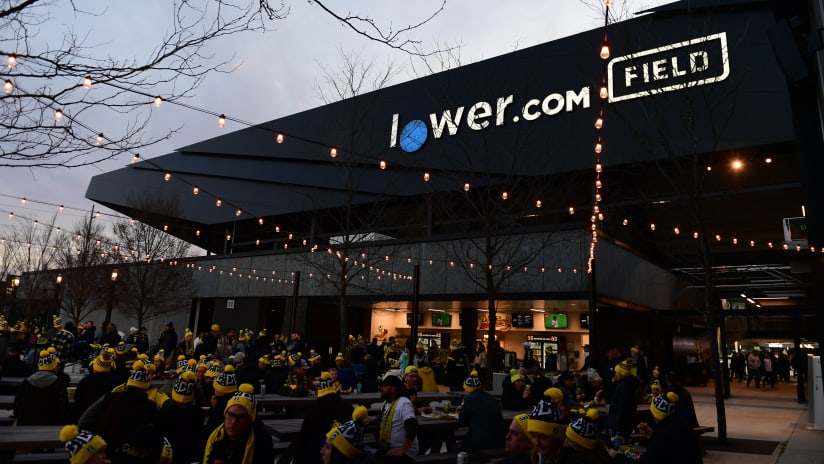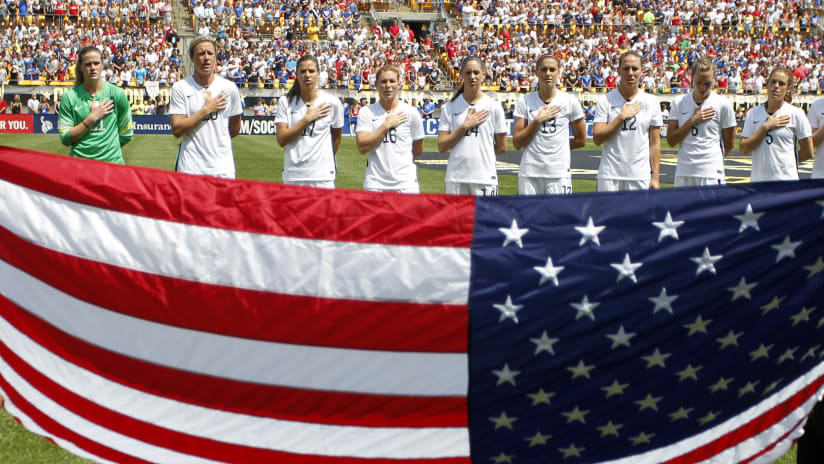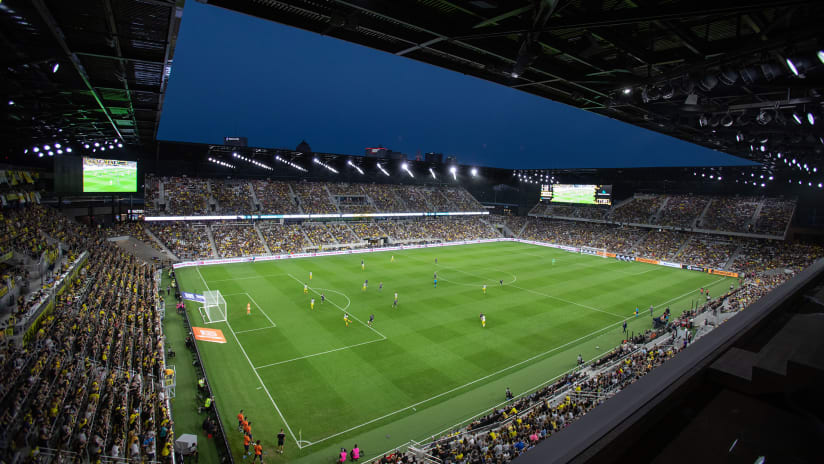Taking care of a professional soccer field is no easy task, but with Weston Appelfeller at the helm of one of the best grounds crews in Major League Soccer, MAPFRE Stadium’s pitch is always in pristine condition.
Ever wondered how they do it?
Although match days are when the meticulous work of Crew SC's grounds crew is put on display, the majority of its hours are put in while the team is away.
“If we have a game, we fill divots, we basically let the grass sit for like three or four days, then we get back to mowing,” Appelfeller says. “We spray the field as needed with whatever it needs, whether it be chemicals for diseases, or fertilizers for helping the grass grow. When it gets closer to the actual game time, we’ll start burning the pattern in that you see on the field for the game, making sure the moisture is the right level, which has been really hard this year with all the rain.”
The rain isn’t just making the moisture levels difficult to control, it can actually affect the players’ safety.
“The day before, we’ll mow, paint, set the field boards up along the outsides,” Appelfeller explains. “We test the field right before the game to make sure the moisture’s where we want it, that it’s going to actually hold up and that it’s safe to play on, and then set the goals up and go.”
As far as chemical treatment, a soccer pitch doesn't differ that much from your own lawn. The grounds crew’s uses products that are not that different from those available to the average homeowner.
“Scott’s is great. All our fertilizers we use are Scott’s, for the most part. We’ve used a lot of Scott’s grass seed this year—a lot more than normal,” Appelfeller says. “We have a great working relationship with them. The stuff that we’re spreading, is pretty much the same stuff that homeowners can spread too. In fact, half the stuff we do spread, they’ll send it and it’s in the same exact bag as homeowners’.”
Although natural grass fields require more maintenance than their simulated artificial turf imposters, Columbus Crew SC’s Director of Grounds says it’s absolutely worth it and is critical to the habitual game of soccer.
“I think it’s very important. Obviously, it changes the state of the game and the way it’s played. It’s safer; you’re going to have less knee injuries and leg burns, just from the common stuff like that,” Appelfeller says. “Heat’s another big thing. It’s so incredibly hot. We have the little artificial field over here, and if it’s a hot day, we can take out our thermometer and it’ll be 40 to 50 degrees warmer.”
Heat variance of that degree can certainly impact players’ performances, and, according to Appelfeller, so can the length and the wetness of the surface.
“The team likes the field really short. Gregg [Berhalter] would love us to have the field even shorter than what it is, but Kentucky bluegrass doesn’t like to be cut as short as they want it to be. We take it to as low as we can go with it,” Appelfeller says. “They also like the field really wet, which all professional soccer players do. We’re always dousing it with more water. That’s why you’ll see us three times a game before warmups, and before the game, and then again at halftime watering the field.”
While the team is most concerned with water dictating the speed of play, Weston also focuses on the overall appearance of the pitch.
“The pattern is burnt in by the rollers that we have on the mower," he says. "If you’re pushing the grass away from you, it’s a light color. If it’s laying back towards you, it’s a dark color.”
Although Appelfeller favors different diagonal patterns, the grounds crew only has so much room for variance.
“The League mandates sort of the mowing pattern that we’re supposed to have,” Appelfeller explains. “The six-yard wide pattern in the box, East to West straight lines. There’s a little bit of play with that during the regular season, but they really tighten it up when we get to the playoffs, and everybody has to have the same thing.”
There’s a good reason Applefeller’s creative schemes are limited.
“It’s for the officials for offside. So when they look across it, they have a reference point. That’s why they don’t like our diagonal patterns.”
He still finds ways to switch things up, though. The grounds crew tried a brand new pattern for Crew SC’s home match against New York, and it must’ve worked as the Black & Gold won 2-1. Appelfeller says they’re featuring it again on Sunday when Crew SC hosts the Chicago Fire in front of a national televison audience (5 p.m. ET, ESPN2).
Appelfeller says the only thing other than the pattern that is unique about getting ready for a match on national television, is the pressure.
“To be honest, we don’t do a whole lot different. It’s a lot more stressful. Any little mistake is shown, especially with high-def. these days,” Appelfeller jokes. “It’s very stressful the day of mowing because you could mow pretty straight all the time, but if you have one line that’s off, you’re attracted to the one that’s off. So, mowing for national TV games is a little bit more interesting.”
Stadium
Crew SC's grounds crew is keepin' it real

Interested in tickets? We're here to help!
Interested in tickets? We're here to help!
